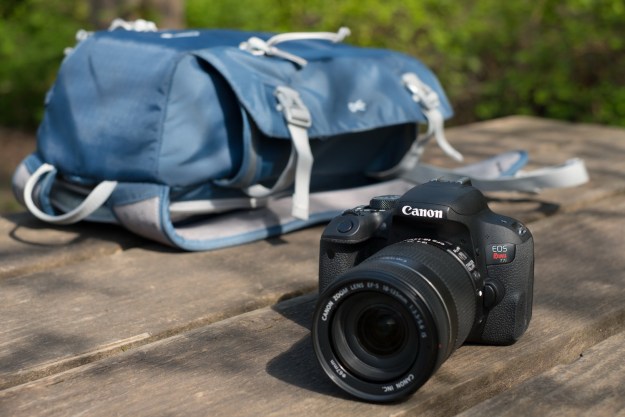
Check out our review of the JVC HD Everio GZ-VX815 camcorder.
Even though Sony is the dominant force in full-featured consumer camcorders, JVC remains a key player. Unlike Canon – which cut back their 2013 CES offerings – JVC announced eight new Everio models ranging from $230 to $500. This is a huge price drop on the higher end since JVC’s camcorders sold for close to $1,000 in 2012, perhaps another reflection of the changing camcorder market. There are no 3D models or film-student-grade editions, just a nice variety in an affordable range. Also of note is the fact JVC no longer sells hard-disk drive based camcorders, a category they invented. We’re fully in a flash memory-based world, folks, and all eight either offer SD card slots or a combo of onboard flash storage and removable media slots. Among the tech highlights are a new imaging sensor, more potent optical zooms, and expanded Wi-Fi functions, as well as viewing and sharing options.
The 2013 JVC Everio lineup includes the $230 GZ-E100; the GZ-E300 ($250)/EX310 ($300)/EX355 ($350); the GZ-E505 ($350)/EX515 ($400)/EX555 ($450) (characterized by their lens-prominent design); and the GZ-VX815 ($500, shown above), which is the top-of-the-line model with a 12.8-megapixel sensor. Even the E100 – which will probably sell for less than $200 when it hits stores – has a decent feature set with a 40x zoom and 24 Mbps AVCHD and SD recording. Click here to see the full specs of each model.

New this year in all models except the VX815 is a 2.5MP Back-Illuminated CMOS image sensor with 2-million effective pixels for Full HD video and improved low-light performance, according to the company; the VX815, as mentioned, has the 12.8MP chip. The eight-model lineup includes seven with 40x or 38x zooms and four with a new wide-angle lens up to 29.3mm (35mm conversion), which is great for shooting indoors or capturing nice vacation vistas.
JVC really pushed built-in Wi-Fi in 2012 and this year they’ve expanded the available Wi-Fi features. New functions include live streaming over the Internet via services such as UStream and One-Touch Auto Back-up that wirelessly transfers recorded video to a PC at the touch of a button. Also new is the optional Pan Cradle, which allows remote panning and tilting of the camera from a smartphone or tablet. Wireless data transfer possibilities include sending video to a smartphone or tablet (AVCHD converted to high-definition MP4 or standard definition), as well as non-converted iFrame data transfer to an iPod, iPad, or Android smartphone; JVC’s free app for using wireless communication functions is available for download from the Apple App Store and Google Play Market. Wi-Fi models are supported by a QR code-based Wi-Fi setup utility and all models have a mobile user guide that’s been optimized for smartphone viewing. JVC engineers also redesigned the Wi-Fi antenna to provide a drastically improved powerful wireless connection over last year’s models, per the company.
In addition to Full HD 1920 x 1080 resolution, AVCHD recording (all models), and Standard Definition recording (all except VX815), Wi-Fi editions also offer an iPhone/iPad-compatible iFrame recording mode at 1280 x 720 or 960 x 540 resolution. All work with iMovie and Final Cut Pro X. Every camcorder also incorporates K2, a technology developed and used in professional sound studios, which is applied during playback (E100) or during recording (all other models). Auto Wind Cut reduces wind noise without that annoying unnatural muting of sound.
The Wi-Fi-enabled VX815 has a 10x f/1.2 lens with an opening focal length of 29.4mm. Along with Full HD video, you can grab 12MP stills. You can even take a 3MP still while shooting top-quality video. As the best JVC model, it has optical image stabilization, a built-in light, and a 3-inch touch-panel LCD.
The Everio E100 and E300 are available this month. The rest will be available in February.





